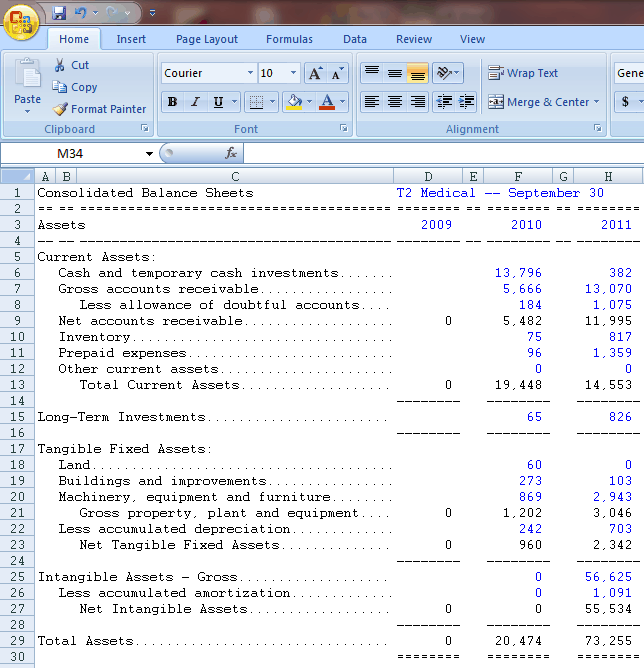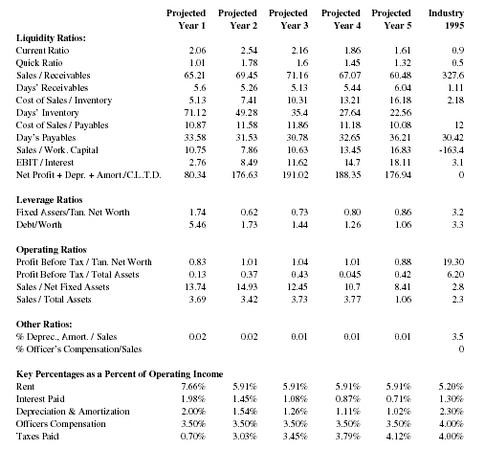Financial Ratios Ratio Analysis of Financial Statements
Post on: 16 Март, 2015 No Comment

Financial Ratios — Part 2
Debt Ratio = Total Liabilities / Total Assets
Debt Ratio is a quick indicator of a company’s level of indebtedness. A higher number means that the company is more leveraged. Both the Total Liabilities and Total Assets can be found on the Balance Sheet.
One thing to note about this ratio. it includes operational liabilities like Accounts Payable and Taxes Payable in its calculation. These are liabilities used to fund the day-to-day working of the company and not traditional debts from a leverage perspective.
Let’s calculate SWI’s Debt Ratio:
Debt Ratio = 167.6 / 354.71 = 0.47 or 47%
SWI’s Total Liabilities are only 47% of its Total Assets, which is a very impressive ratio indicating that SWI is not too leveraged.
Debt-to-Equity Ratio:
This ratio compares the Total Liabilities to the Total Equity of the company. It paints a useful picture of the company’s liability position and is frequently used.
Debt-to-Equity Ratio = Total Liabilities / Shareholder’s Equity
Both the Total Liabilities and Shareholder’s Equity are found on the Balance Sheet. For SWI:
Debt-to-Equity Ratio = 167.6 / 187.11 = 0.89 or 89%
This number is higher than SWI’s Debt Ratio, but is still less than 1 indicating that SWI’s creditors have less money in the company than its equity holders.
It’s common for large, well-established companies to have Debt-to-Equity ratios exceeding 1. For instance, GE carries a Debt-to-Equity ratio of around 440%, and IBM around 130%.
OPERATING PERFORMANCE/PROFITABILITY RATIOS
These ratios show how well the company utilizes its resources to make profits and create shareholder value.
Gross Margin:
Gross margin is the gross income(or profit) expressed as a percentage of sales (or revenue).
Gross Margin % = Gross Income / Sales x 100
Gross margin shows the profit margin after direct costs (cost of goods sold) have been taken out of the sales. Any downward trends in the gross margin over time could indicate things like increasing competition, rising inventory costs, poor pricing, etc.
For SWI, from its Income Statement we get:
Gross Margin % = 127.88 / 426.89 x 100 = 30%
Operating Margin:
Operating margin is the operating income (or profit) expressed as a percentage of sales (or revenue).
Operating Margin % = Operating Income / Sales x 100
Operating income bakes in the effect of indirect operating costs — wages, supplies, legal expenses, research & development expenses, depreciation, etc.
A downward trend of operating margin that cannot be explained by the gross margin getting worse means that operating expenses have increased over time without a proportional increase in sales. The next step under such conditions would be to examine which operating expenses increased and if this increase was justified.
For SWI, from its Income Statement we get:
Operating Margin % = 70.13 / 426.89 x 100 = 16.4%
Net Margin:
Net margin is the net income (or profit) expressed as a percentage of sales (or revenue).
Net Margin % = Net Income / Sales x 100
Net income reflects the bottom line — the percentage of sales that the company gets to keep as profit. This ratio is best compared with other companies within the same industry.
A downward trend of operating margin despite a healthy gross and operating margin would indicate that interest expense, loss on sale of assets, taxes paid, or other extraordinary expenses might be responsible. The next step would be to dig deeper to figure out which of these increased, and why.
For SWI, from its Income Statement we get:

Net Margin % = 42.21 / 426.89 x 100 = 10%
Return on Assets (ROA):
ROA indicates how well the management of the company employs the total assets of the company to create profits. Higher this return, more efficient is the management.
Return on Assets % = Net Income / Total Assets x 100
Since this calculation is based on total assets, capital intensive businesses will have very different ROAs compared to businesses with very small investment in assets. Therefore, companies being compared need to have similar product lines and business types.
For SWI, Net Income is found on its Income Statement and Total Assets comes from its Balance Sheet —
ROA = 42.21 / 354.71 x 100 = 12%
Return on Equity (ROE):
ROE indicates how much the shareholders earned on their investment in the company. Again, a higher percentage is better.
Return on Equity % = Net Income / Total Equity x 100
ROE is a widely used ratio among investors. ROE can be compared with other companies within the same industry and also with the market in general.
A note of caution — you must remember that equity = assets — liabilities. Therefore, for the same net income, an increase in the companies debt will reduce its equity base and increase its ROE. The bump in the ROE comes at a price — higher debt.
So ROE should never be interpreted alone. The leverage ratios discussed above should be used in conjunction with ROE.
For SWI, Net Income is found on its Income Statement and Total Assets comes from its Balance Sheet —
ROE = 42.21 / 354.71 x 100 = 12%
This brings us to the end of Part 2 of our Financial Ratios series. In Part 3 we will explore the next important category of Financial Ratios — Valuation ratios. Click on the link below to get there.
Financial Ratios — Part 3 >>














